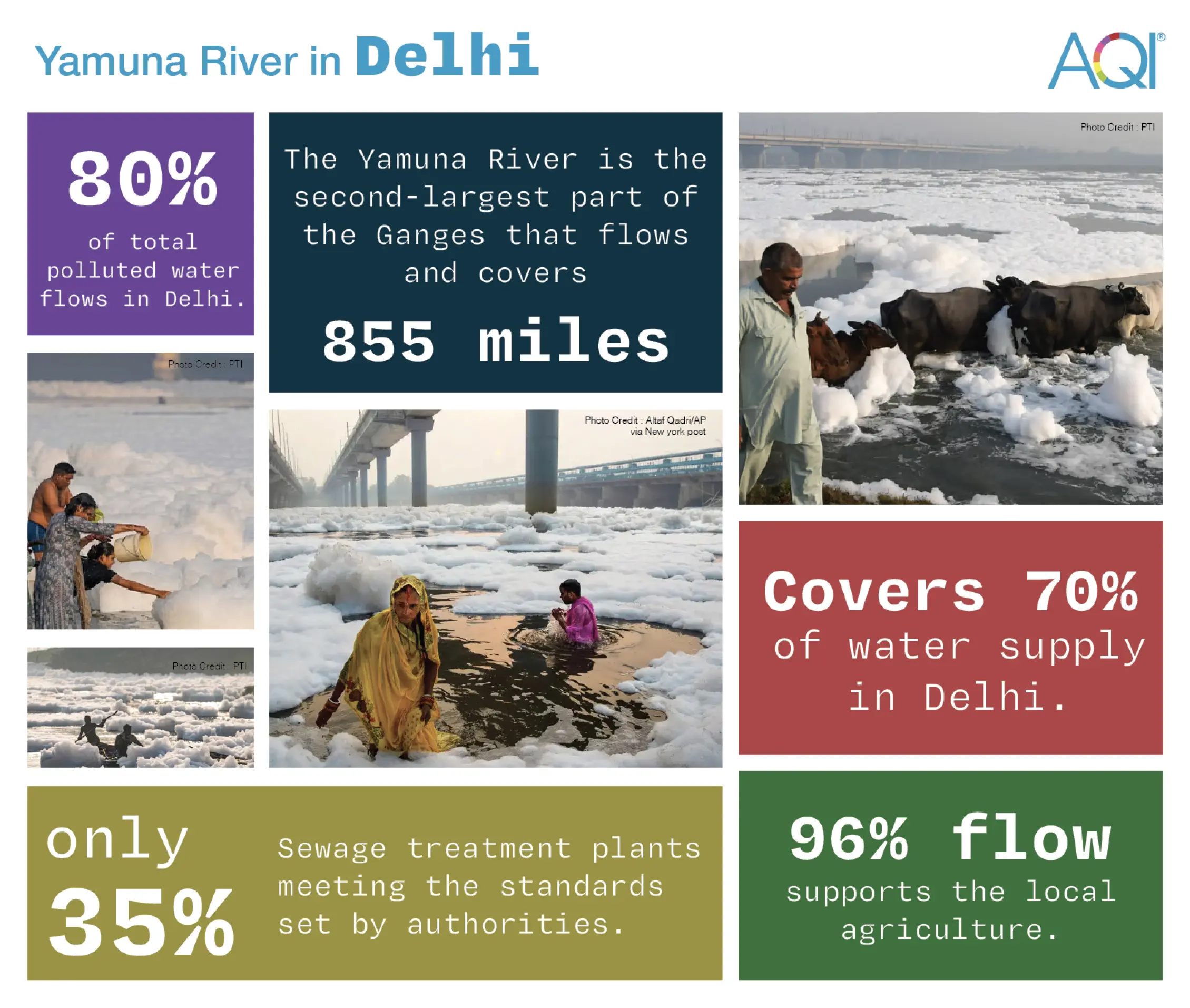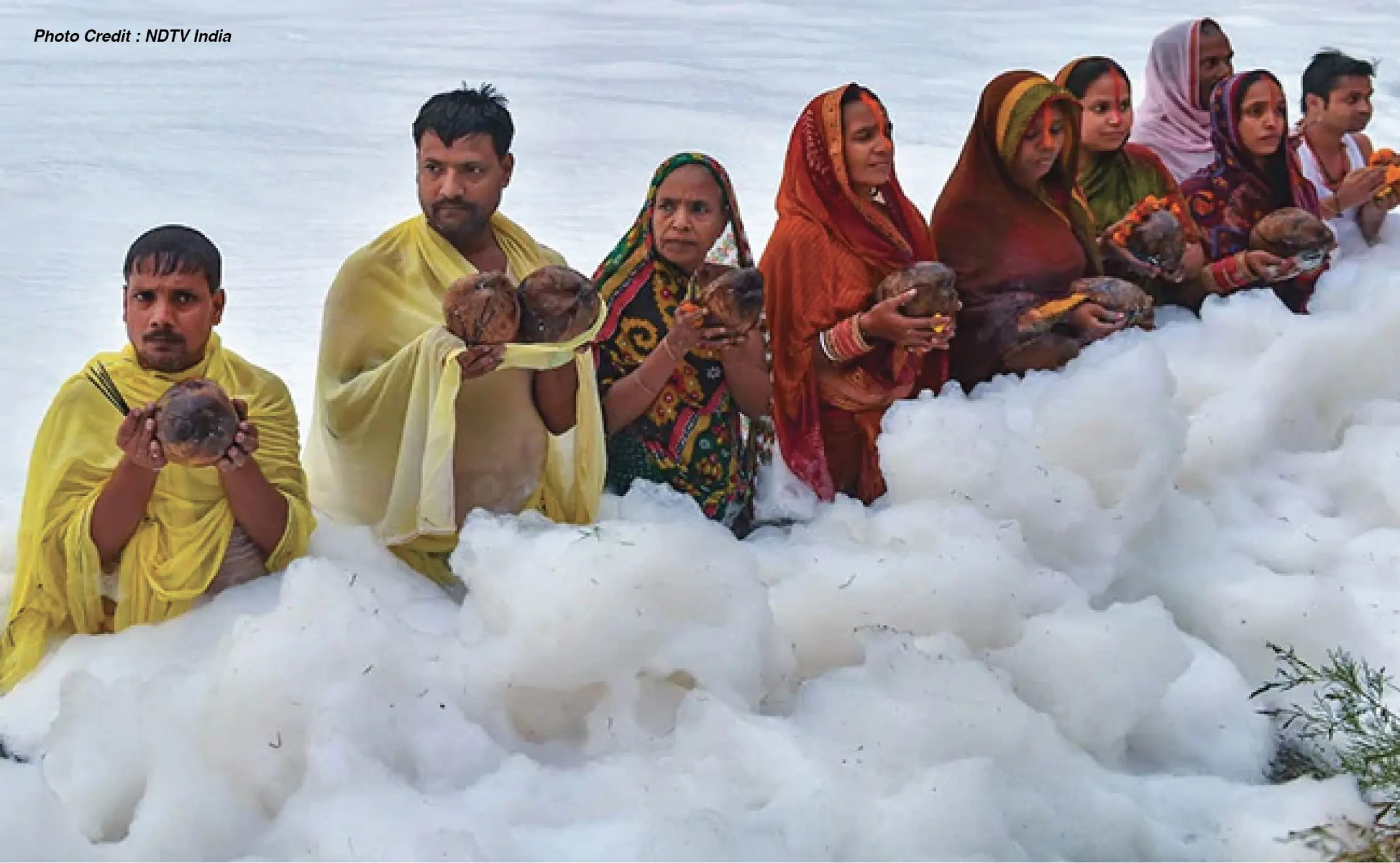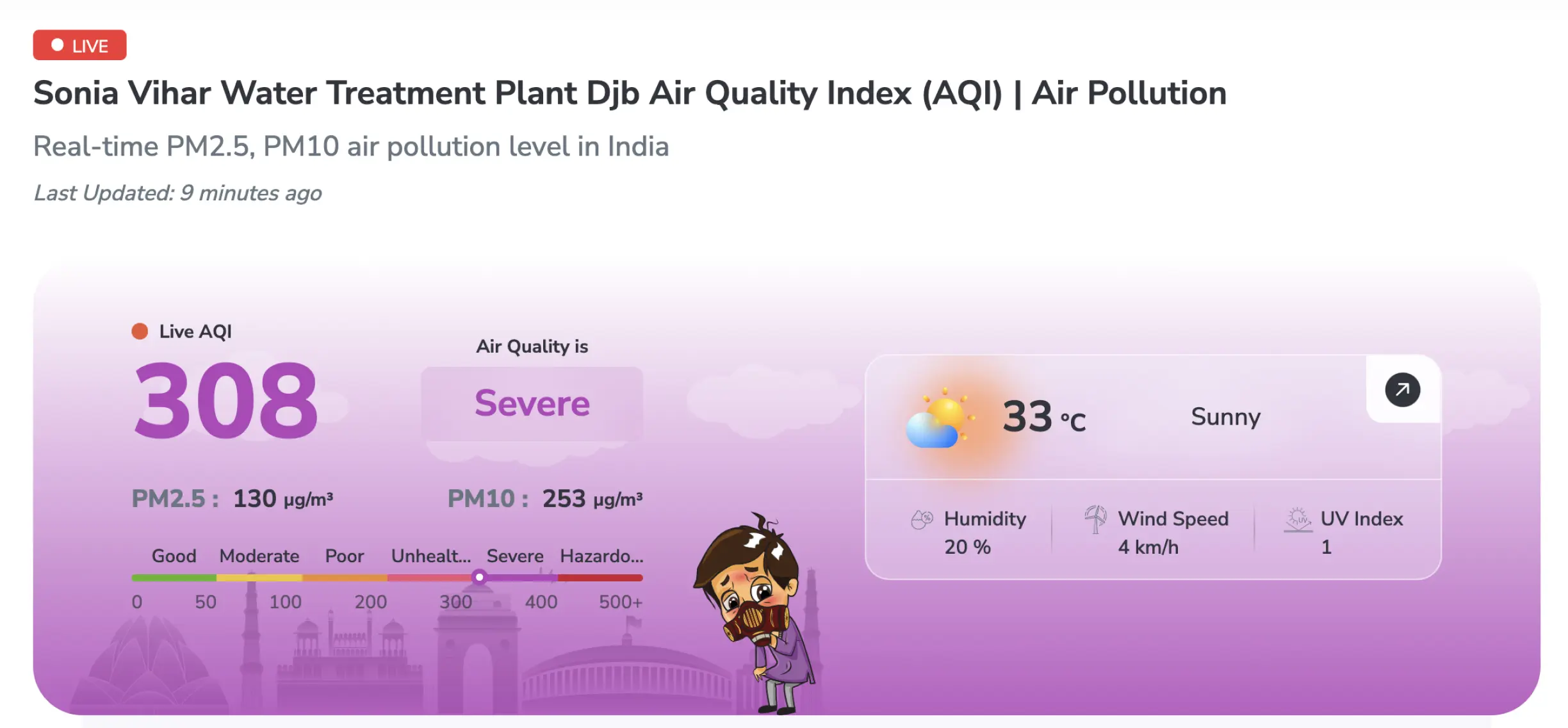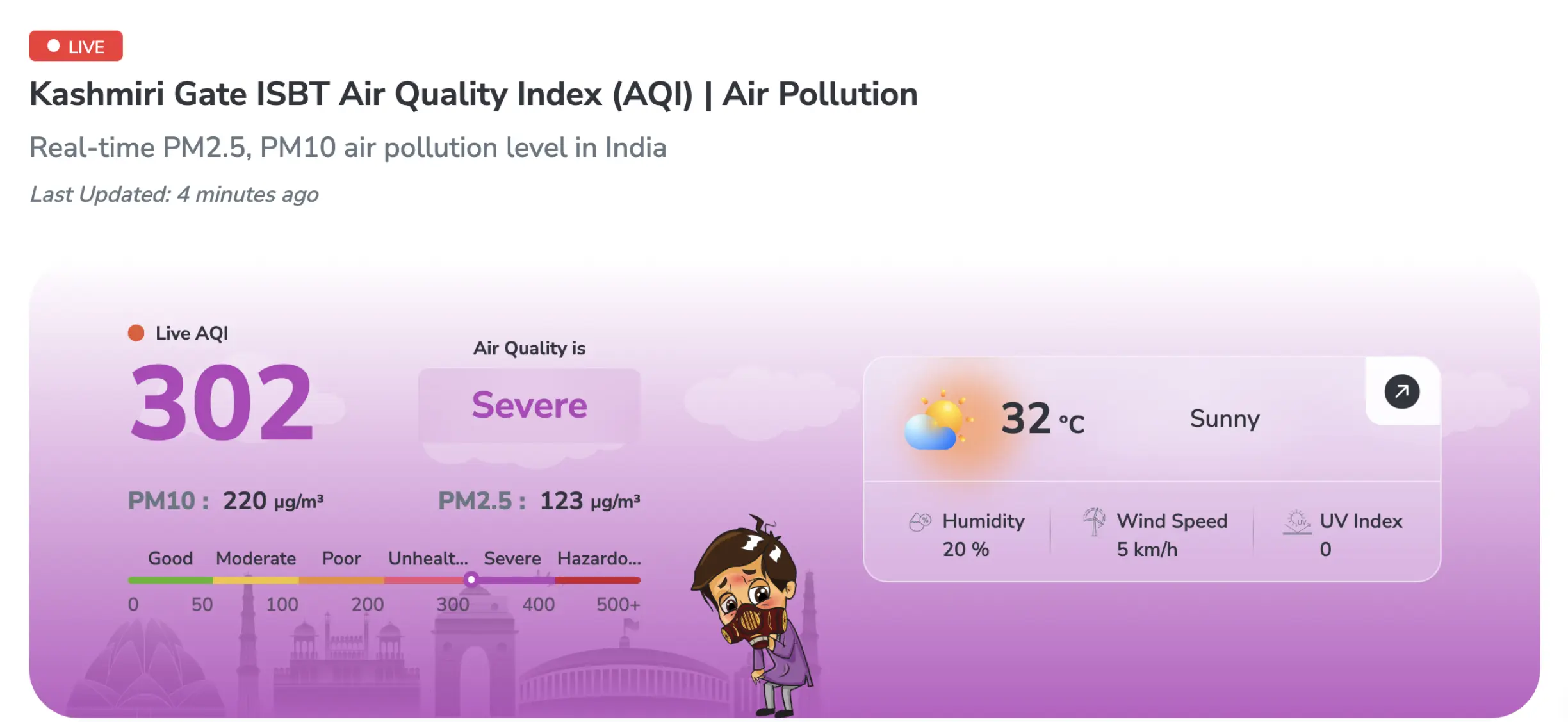Yes, Delhi is not just breathing poison, everyone is drinking pollution as well. Water pollution in Delhi is also at concerning levels. The crucial and the only water source of Delhi is covered with a dense and thick layer of toxic froth. As Yamuna in Delhi is the most polluted river posing a double threat to people living in Delhi.
After Diwali, Delhi is preparing for Chhath Puja that is celebrated on the Sixth day after Diwali. So, the festival involves rituals such as stands in the river water. However, it raises safety concerns for all devotees because of the pollutant toxic water inside the river. Let us know what is causing toxic froth in Yamuna in Delhi, is the government doing anything for this? Or Delhi is going to experience a water pollution crisis too?
Here are answers to all your questions on Air and water pollution in Delhi!
Yamuna River in Delhi: An important yet the most polluted lifeline!
Firstly let us know about the Yamuna River and how water pollution in Delhi is affecting it.
The Yamuna River is the second-largest part of the Ganges flows and covers 855 miles. The entire ecosystem and economy of Delhi depends on the river. Because it covers 70% of the water supply in Delhi and fulfils 57 million people’s daily water needs. Besides, the Yamuna’s 96% flow supports the local agriculture.
What makes the river’s water polluted? Around 13.6 miles or 80% of its total pollution flows in Delhi. The major source of water pollution in Delhi is untreated waste in the river. Only 35% of sewage treatment plants in Delhi meet the standards set by authorities. Thus, these release a vast amount of pollutants in the river and cause the most water pollution. Besides, many reports and studies also claimed that the Yamuna River’s water has the highest pH level which can make any person sick.

Here check the top 4 primary causes of water pollution in Delhi:
1. Sewage water: It is a major issue because untreated sewage water mixes in the river. Many water treatment plants do not meet the pollution control standards. It involves soaps and detergent water that reacts with environmental conditions and results in froth.
2. Waste Dumping: Different domestic and municipal authorities dump waste directly into the water that pollutes the river.
3. Soil Erosion: Many lands near the river are undergoing deforestation due to industrialization or for other purposes. It results in soil erosion and soil helps as the natural purifier but sedimentation affects the water quality.
4. Chemical Runoff: Many industries or agricultural activities wash off or release fertilizers, pesticides and other harmful pollutants into the river. Many organic pollutants also results in froth formation.
Chhath Puja and Frothing Waters: A Toxic Cocktail of Pollutants

Chhath Puja a north Indian festival is on 7th November, 2024. The devotees worship and perform their rituals by standing in the water to offer prayers to the Sun God. Yamuna in Delhi is the main water body for the festival. But here is the concern, the river is covered in toxic froth. All devotees will face water pollution in Delhi and it can cause various health issues.
But pollution is always a concern so why now river covered with dense froth over the surface from October to November? Environmental factors form the froth over the river surface. It happens because after monsoon water temperature becomes warmer and increases the surfactants’ reactions. These are the compounds that reduce the water’s surface tension and easily form the foam.
But what’s actually in the water that poses a threat to all people? The chances of toxic froth formation include high levels of ammonia, phosphates, nitrates and other pollutants. Moreover, temperature conditions can result in thick froth on the river surface. Do you know what these pollutants can do to you when in contact:
What are the major pollutants in the water pollution in Delhi?
1. Ammonia: It is released mostly from industrial waste and sewage in Delhi. The high level of ammonia in water can result in skin irritation, eye damage or respiratory conditions.
2. Phosphates and nitrates: Domestic wastes release detergents that result in these chemicals. These chemicals affect the river life and result in thick foam on the river.
3. Heavy metals: The Yamuna River also has heavy metals that are released from industrial and other discharges. These include lead, mercury etc which are very toxic for river life and humans too.
4. Pathogens and organic waste: Untreated sewage water releases dangerous bacteria and other pollutants that can result in various severe health conditions. It can cause infections or extreme stomach conditions that can affect the devotees’ health on Chhath Puja.
Can Yamuna River water pollution in Delhi impact the nearby air?
Yes, Water pollution in Delhi can increase nearby areas’ air pollution in Delhi as well. A thick froth inside the river can release various pollutants in the air. It can impact the air in the river’s nearby areas. Here check what is the real-time air quality condition of nearby areas:
Here check the air quality of two nearby areas of Yamuna River, Sonia Vihar Water Treatment Plant Djb and Kashmiri Gate ISBT. These are the two nearby areas of the river and to check air quality. Also, the mentioned pollutants can release VOCs (volatile organic compounds) in the air.
The current AQI level in Sonia Vihar Water Treatment Plant Djb is 308 in the “Severe” Category.

Current AQI levels in Kashmiri Gate ISBT is 302 in the “Severe” Category.

Is there any hope from the government to reduce the froth over the river?
Yes, the government is working to reduce the froth over the Yamuna River. Moreover, to protect devotees, the Delhi High Court has refused entry into the river to perform the ritual. As already on Tuesday, many devotees have started their festival by taking a bath in the river. For festival celebrations, the Delhi Government has assigned around 1000 spots in Delhi with proper arrangements.
Final Thoughts
The Yamuna River is mostly polluted throughout the year. But concern arises more after monsoon and pollution and environmental factors result in dense froth over the river bed. During Chhath Puja, festival, it resulted in a wake-up call as an urgent need to protect citizens. It is high time to take action for clean and fresh river water for future generations.